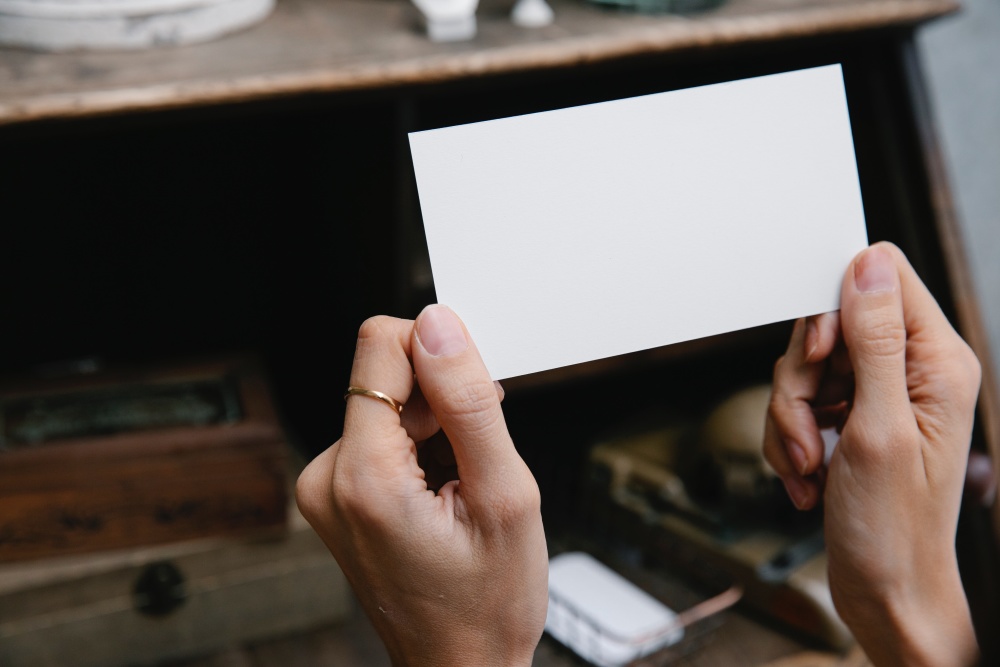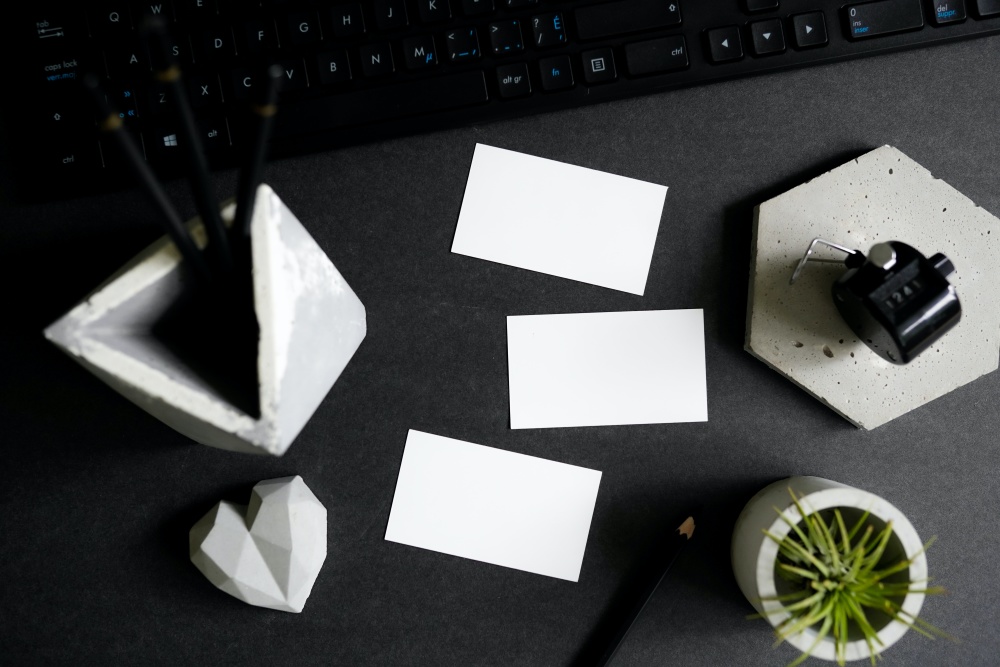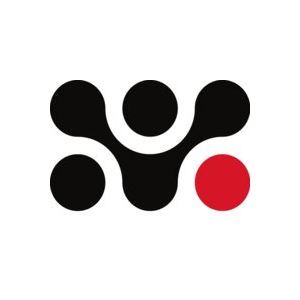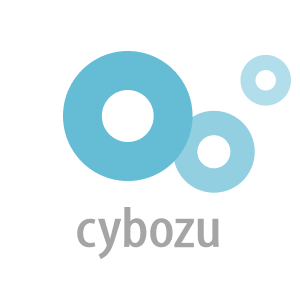Updated April 3, 2025
Business cards in Japan: What you need to know in 2025
For many, business cards are simply a thing of the past.
Yes, in some parts of the world, it might still be somewhat of a tradition to have business cards made, especially when you start your own business or get promoted to a title you’re proud of. However, the reason is usually to help the reality set in that it’s your name that’s on the card, just like you always imagined it.
Truth be told, at least for the majority of the countries in the West, business cards are pretty much a novelty in that they don’t actually serve the purpose they’re made for, which is simply sharing your contact details.
Especially considering that we’re in the era of digitalization and linking up on LinkedIn, you’d think that not many people use actual business cards anymore to share contact information, even if people still have them made, but you’d be dead wrong.
In Japan, business cards, which are called meishi, are still very much a thing. In fact, they are quite a big deal when it comes to making a name for yourself and having other people respect you as a business individual.
So, what’s the deal with Japan and business cards? What’s the history behind it? Do I need to have business cards made to be taken seriously in Japan? These are some of the questions I’ll be answering in this post.
Now, buckle up because we’re first going back in time for a brief history lesson on business cards in Japan.
In this article: 📝
Japanese Business Cards: The Background
While the popularity of business cards in Japan is undeniable, there’s a debate on how exactly they originated in Japan or how they became as popular as they are today. There are seemingly two explanations for this, and it’s up to you to pick whichever you want to believe in.
According to one story, business cards didn’t really exist in Japan until the Meiji period, which lasted between the years 1868 and 1912. To explain in simplest terms, this period is known for the demise of the military government in Japan and the reinstatement of imperial rule.
Due to this substantial change in the political climate, the Meiji period brought along a series of major societal and economic changes to the country. It was also in this era when Japan, which was an exceptionally closed-off society — even more so than today at the time — opened its gates to the rest of the world.
This wind of change not only changed society but business practices as well. According to this narrative, it’s believed that it was exactly during this period when business cards started to become a thing in Japan. However, an alternative story says otherwise.
An Alternative Tale
A second, more specific story essentially tells us the same thing, as it’s still believed that the concept came from Western countries and was later adopted by the Japanese public. However, according to this narrative, the history of business cards in Japan actually predates the Meiji period altogether.
A little earlier than the Meiji period, in 1853, when Japan was still in their Edo period, and the military was in charge of the government, the famous black warships sent by the U.S. that dropped anchor in the bay of Tokyo housed a group of representatives that used cards with information on them to identify themselves.
So, it’s believed that this is how business cards first arrived in Japan. As Japanese people simply liked the idea, they too began utilizing business cards to identify themselves, and that’s allegedly how business cards gained the popularity they have today.
No matter which story you believe in, one thing’s for certain: if you’re coming to Japan for business or are considering working here, you’ll need a business card of your own.
Japanese-Style Business Cards: What Information to Include
A Japanese business card isn’t that much different from what you may be accustomed to, with the only difference being that they are slightly bigger in size. That being said, you still need to be mindful of the information you provide on your meishi and how you should present it.
Here are some of the most essential pieces of information you should include in your Japanese business card.
Corporate/Organization name at the top: The name, or better yet, the logo of your company or organization, should be in big letters and at the top of your meishi.
Your name, in the right order: While you may be used to writing your name first, the correct order on your meishi should be your surname or family name first, then your first name.
Your department and position: Before or after your name, you can put down your title or position at the company so that the person who receives the card can immediately be aware of your seniority level.
Company information: Under your name and title, company information, such as company address, along with a postcode and phone number, should be included.
Your phone number: While you can just add your phone number, you can — and quite frankly, should — also add both your business phone number and the company number if possible.
Your e-mail address and URLs/Links: An e-mail address is the most common, but in tech, you can also see lots of business cards with personal website links and even social media handles as well.
Optionally, opening hours of the business: This isn’t a must, but if you’re a store owner and you’re making a card for your store, you can also include the opening and closing hours.
What Do Japanese Business Cards Look Like: The Essentials

Practically speaking, a Japanese business card is not much different than what you may be accustomed to. That being said, there are still some nuances that are worth mentioning.
First of all, a Japanese business card, or a meishi, is slightly bigger in size than that of a business card made in the United States. While a standard American business card is 89 mm x 51 mm (3.5” x 2”), a Japanese meishi is usually 91 mm x 55 mm (3.58” x 2”).
This might seem like a trivial difference but do keep the size of your cardholder in mind as well, as you’ll also need a proper business card holder to carry your cards around.
It’s important to present your meishi in as pristine of a condition as possible, so you should avoid carrying them in your pockets or wallet. Ideally, you should pull out your meishi from a nice card holder that you took out from the pocket of your shirt or jacket. I’ll elaborate more on this later in the section regarding business card etiquette.
Another feature of Japanese business cards is that they usually have both languages on different sides of the card. This is especially the case for people who are working in international fields, but as a foreigner, it’s best to adopt this as a general rule.
One side of your card should be in English and the other side in Japanese, ideally with a katakana pronunciation of your name, as not everyone knows how to pronounce foreign names, and they may feel too shy to ask in order to not seem rude.
Alternatively, you can also have two separate cards for each language, but this is both costly and hard to keep track of, as you’ll always need to carry around two sets of each. So, I recommend the double-sided approach, which is what most people do.
Business Cards in Japan: What Are They For?
So, while the popularity of business cards in Japan is undeniable, and you may very well be convinced that having one made is crucial, let’s see why this is the case.
Exchanging Personal Information
This may sound like a no-brainer, but the first and foremost function of a business card in Japan is to simply exchange information.
You might think that exchanging a link or a username instead is easier, but try spelling out your link a few times in front of a group of professionals you meet at a networking event, and you’ll realize that this isn’t really the case.
Simply put, your business card is all of your information in one place. It might be as simple as a QR code that has all of your links in it, but the practicality of a physical card is still at play. You can deliver all the information a business contact may need in mere seconds, and you can do so even if it’s multiple people you’re dealing with.
Besides, some people, especially older business individuals in Japan, may not be as tech-savvy and might not be able to use devices to their full extent to exchange information efficiently, which turns the process into too much of a hassle for them.
So even if it looks like an old habit that’s still hanging on by the threads of tradition, in reality, business cards are just way too practical to give up.
Raising Brand Awareness
Another important function of having your own business cards made is brand identity. You might think that this is only the case for businesses, but don’t write this off without hearing me out first.
It’s true that brand identity is important for businesses. Having a card of your business that has a cohesive aesthetic look that can be associated with your brand, along with your logo, can really do wonders for your business, as it strengthens the overall brand identity.
However, in an age where people can become famous for nothing but their personalities, brand identity is just as important for individuals. Nowadays, it’s common to see many individual developers that have their own websites and blogs, who are branding their names and likeness online.
By doing so, they almost achieve a level of “celebrity” in their field that renders preparing a portfolio for job applications redundant because they’re simply a “renowned personality” whose qualifications and past work are already out there.
So, utilizing cards in this context can give you an edge and even have people you meet in a business context take you more seriously, as the impression you’ll give off will be of a well-known person rather than a simple nobody.
Having a Professional Look

This one actually goes hand-in-hand with the concept of brand identity since it’s about your image, but while you can get far without a strong business identity, lacking a professional look will hinder your career in much more crucial ways.
Even if your business card isn’t the best-looking or the most original one, you still need to have, at the very least, a bare-bones business card that you can hand out in meetings or professional events.
I mentioned this in my post on the work-life balance in Japan, but the business culture in Japan is pretty intense. That said, it may be less so in more modern companies that are in the tech world, like the ones we feature on the Japan Dev company list.
Because of this and the Japanese culture’s strong emphasis on respect, not having a business card present can not only make you look unprofessional but flat-out disrespectful to the person you’re meeting.
So, especially as a foreigner, making sure that you have a business card ready to exchange will emphasize your professionalism and also show your understanding of Japanese culture, implying that you know the rules and are dedicated.
How to Properly Exchange Business Cards in Japan
Having explained just what Japanese business cards are and their primary uses, it’s time for perhaps the most important part of this whole conversation: the exchange, which is called meishi koukan.
As you’ve come all this way, having prepared a business card and all, you don’t want to mess up the actual ritual of exchanging meishi, so let’s go step by step and explain what exactly you need to do.
Always Be Ready
Make sure to carry enough business cards — always keep a bunch with you at all times, just in case.
After all, you never know when you’ll need them, and you don’t want to make the impression that you don’t have business cards, especially after you went through the trouble of having them made.
Similarly, if you have separate cards for different languages, make sure to have a sufficient amount of both. Having cards in Japanese is especially important, as you don’t want to look presumptuous and give off the impression that you think that everyone should speak English.
Know Where Your Cards Are
You don’t want to go looking around for your card when the occasion arises. Always keep your cards at the ready, preferably in your jacket and/or shirt pocket, to avoid dead air during conversations.
You can also keep your cards in your purse if you carry one, as long as they’re in a nice cardholder, but I don’t really recommend it unless your purse is easily reachable or has an easily reachable pocket just for this purpose.
Avoid, however, carrying your cards in your trouser pockets at all costs, especially without a cardholder, which can not only make you look unprofessional but can also be disrespectful to the person you’ve just met.
Hand Out Your Cards Properly
When you take your well-placed business card out to give to the person you’re meeting, make sure to introduce yourself as well. Do this while presenting the card in your hand, along with a simple, respectful bow.
If you read my post on Japanese greetings, you probably already know this, but to give you the low-down: deeper bows are for apologies, and small, gentler ones are to show respect and acknowledgment.
You can also say “nice to meet you” in Japanese by saying hajimemashite (はじめまして). This will show that you’re considerate and sincere. If you want to learn more basic phrases you can use, make sure to check out my post on basic Japanese phrases you can start using today.
When you hand out your card, you want to hold it with both hands from the top corners while having it face the right way for the person who’s receiving it. Make sure that you’re not covering your name or the logo while you’re holding the card.
Another thing to look out for here is treating the card you receive with respect. Think of it like a representation of the person who gave it to you. And if you’re handing out cards to multiple people, make sure not to treat the cards as if they’re playing cards, and you’re dealing a hand.
Instead, take your time as you hand out each card, and try to use both hands if possible. This will be appreciated by the keen eyes in the room.
Lastly, remember that this is the only correct way of handing your business card over. If you’re in a room full of people that you need to exchange contact information with, the last thing you want to do is to leave a stack of cards out for people to pick up. This will not only devalue your image but may also be deemed disrespectful.
Be Mindful of the Exchange Order
While it’s important to hand out your business card properly, the order in which you exchange business cards is also extremely important. Here are some cues to help you figure out the right order to exchange meishi.
Remember, these rules are crucial, especially if you’re in a meeting or networking event with people from various ranks/seniority levels.
The Basic Rules of Business Card Exchange Order
In general, the person of lower status presents their business card first. For example, if an intern or new graduate goes to visit a respected professor at a university, they will generally show their business card first.
And if there are multiple people on the other side of the meeting, then the lower-status person should present their card to the highest-status person in the other group first, and then work their way down the rest of the people by status.
This rule of lower status people presenting their cards to higher status people first is the main overarching rule, but there are some special cases with their own rules.
Business Card Exchange Order for Sales Meetings
Another common situation is when a person — or group of people — visits another group for the purposes of sales.
In this case, there are two main things you need to remember: first, visitors exchange their cards first. So if a group of salespeople from Company A come to Company B to give a presentation, Company A (the visiting group) will initiate the exchange.
And second, the exchange starts with the highest-ranking person and works its way down. For example, if Company A’s group consists of a sales manager and two sales associates, the sales manager will present their card first. And then the associates will follow.
So to recap, in the case of a group of salespeople from Company A traveling to Company B, the order of exchange will go as follows: first, the sales manager from Company A (the visiting company), then the sales associates from Company A, then the highest-ranking person from Company B, followed by the lower-ranking members from Company B.
In practice, it might not go exactly like this and you need to be a bit flexible. For example, some exchanges may happen in parallel rather than one after the other. But the above rules are the guidelines that will usually define how the interaction goes, so it’s good to remember them.
It may sound confusing at first glance, but it’s actually quite simple as long as you’re mindful of the attending parties’ seniority levels. And it should make intuitive sense if you think about it. If the presidents of two companies meet, they usually greet each other first before introducing their respective secretaries of state.
Accept Other People’s Business Cards
Now that you’ve given meishi to the person or people you’ve just met, it’s now time to accept their cards in a graceful manner.
At this point, you may be tempted to take the card and stuff it in your bag or pockets, but you’ve come this far, so you might as well do the rest of the exchange properly as well.
This may sound slightly awkward, but in order to respectfully receive someone’s business card, you need to hold it with both hands. This is simply because you’re showing respect to the person who you’re receiving the card from.
However, don’t let the theatrical nature of the act get to you, as you may feel inclined to hold the card up high as if you’re holding a sacred artifact. Try to be subtle and remind yourself to hold the card no higher than your chest height at the maximum.
Examine Other People’s Cards
Upon receiving other people’s meishi correctly, you’re almost at the finish line. However, don’t skimp on this final step.
When you take the card, make sure to examine it properly. Don’t just look at it for a split second and dismiss it. What I mean here is to take an actual good look and give yourself enough time to read at least the name, the company, and the title of the person presenting the card.
As I mentioned, business cards in Japan are often double-sided with an English and a Japanese side. Make sure to flip the card around even if you don’t speak Japanese, and take a look at the Japanese as well.
Also, this is perfectly normal for a foreigner, so don’t be shy to ask the person how to pronounce their name correctly during this step. The person will more likely appreciate it rather than take offense, as you’re showing that you actually care about getting to know the person you’ve just met.
Once you’re done, you can put the cards neatly on the table to refer back to them. If you’ve accepted multiple cards, you can put the person with the highest rank’s card in your cardholder and leave the rest out in front of you.
Dos and Don'ts of Meishi Koukan: The Etiquette of Exchanging Business Cards in Japan

The exchange of meishi, or the ritual of meishi koukan, is as simple as the steps I just explained. It may seem like a lot, but believe me — explaining the whys and the hows take much longer than performing the actual steps once you get it down.
With that being said, however, there are still a few dos and don’ts you’ll want to watch out for.
DO thank the person for the card you received. “Nice to meet you” works too, but saying both will work much better.
DON’T put the card away as if you’re shoving a piece of paper into your pocket. Treat the cards with respect, and put them away nicely in a cardholder.
DO take your time to look at each card properly, even if you received multiple of them. The silence will be appreciated rather than seeming awkward, trust me.
DON’T write or scribble on someone else’s meishi, especially when they’re present. It’s okay to write on yours while handing it out if there’s additional information you want to give out.
DO call the person you just met by their last name only. In Japanese, you should say the last name and add a san at the end to show respect in professional settings.
If you want to learn more about public etiquette in Japan, not just for work but for other aspects of life as well, I recommend checking out my post on honne and tatemae, where I talk about the Japanese art of putting on a public face and concealing your true feelings when necessary.
Digital Business Cards: The Start of a New Era
While the paper-based business card culture is still pretty much thriving, the rise of digital business cards in Japan is undeniable, especially in tech-related fields.
So, before I close out this post, I’d like to give you a brief overview of the transition of business cards as we know them today and gander at the possibilities the future holds regarding the culture of meishi.
As we all know, with the emergence of the pandemic in 2020, the world came to a halt, and businesses forcibly entered into an era where the primary means of communication were online. With this, in-person meetings, conferences, and basically, all professional events had to carry over to the arguably limited medium that is the Internet.
Japan was affected more than most, considering the culture of exchanging physical business cards was the primary way to keep track of who’s who or who you should be referring to.
Yes, you could see the names of the people you were in a meeting with, but asking about people’s titles sounded inappropriate, and you also had no way of knowing who was the decision maker or who was a lower-level employee.
Besides, events that were meant for networking didn’t work as they used to when held online because a big component of getting to know other people and making new connections relied largely on the exchange of physical cards.
Luckily, companies rose to the occasion.
A Digital Solution to a Physical Problem
So, employees of companies that work in tech — and are therefore more well-versed in technology — went looking for digital solutions. Companies like Sansan, which is a Japanese company that makes products for contact management, came up with some.
Thanks to these advancements, business cards now come in many different digital forms in Japan. For instance, in Zoom calls, you can have a QR code next to your name so that people can scan it with their phones and reach your details instantly.
Similarly, URLs are another way to exchange digital business cards nowadays, which many people already have in the bio section of their socials.
According to Sansan, who started their business on paper-based cards, their physical card scanning service has been used considerably less ever since the pandemic started.
So, even though exchanging physical cards at in-person events still seems to be the preferred route, the future of digital business cards seems bright in Japan as more and more people utilize them for their remote work needs.
While it’s time for me to go now, you can continue learning about the culture of networking and the opportunities in Japan by reading my posts on meetup groups in Tokyo, networking in Fukuoka, and the Kansai region (Osaka, Kyoto, Kobe), where I feature the best meetup groups and networking events in each region/city respectively.
Get Job Alerts
Sign up for our newsletter to get hand-picked tech jobs in Japan – straight to your inbox.









